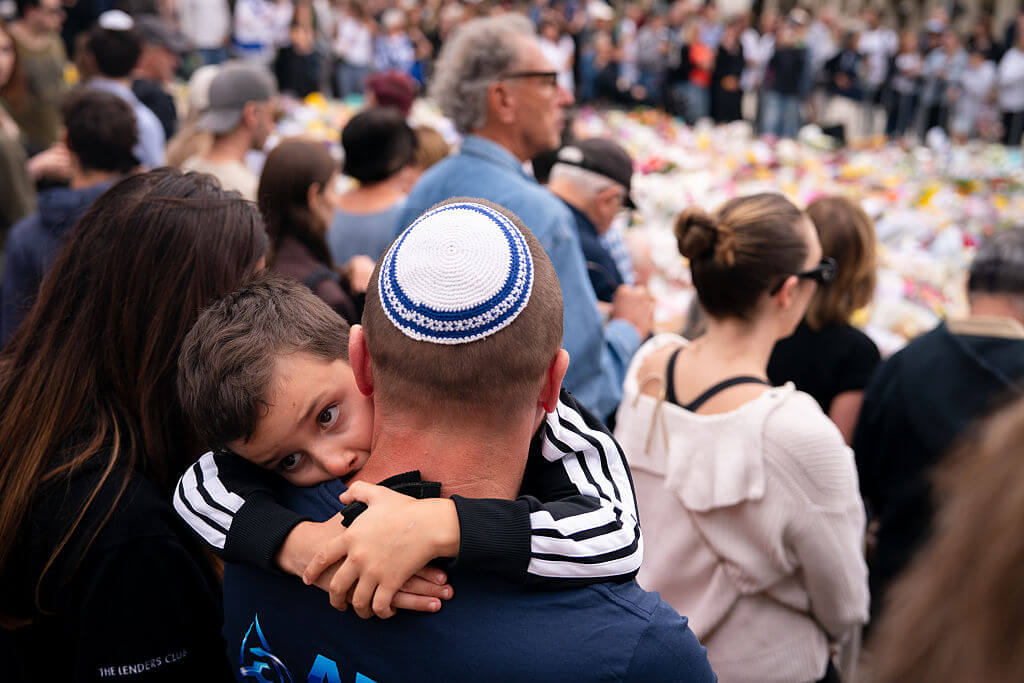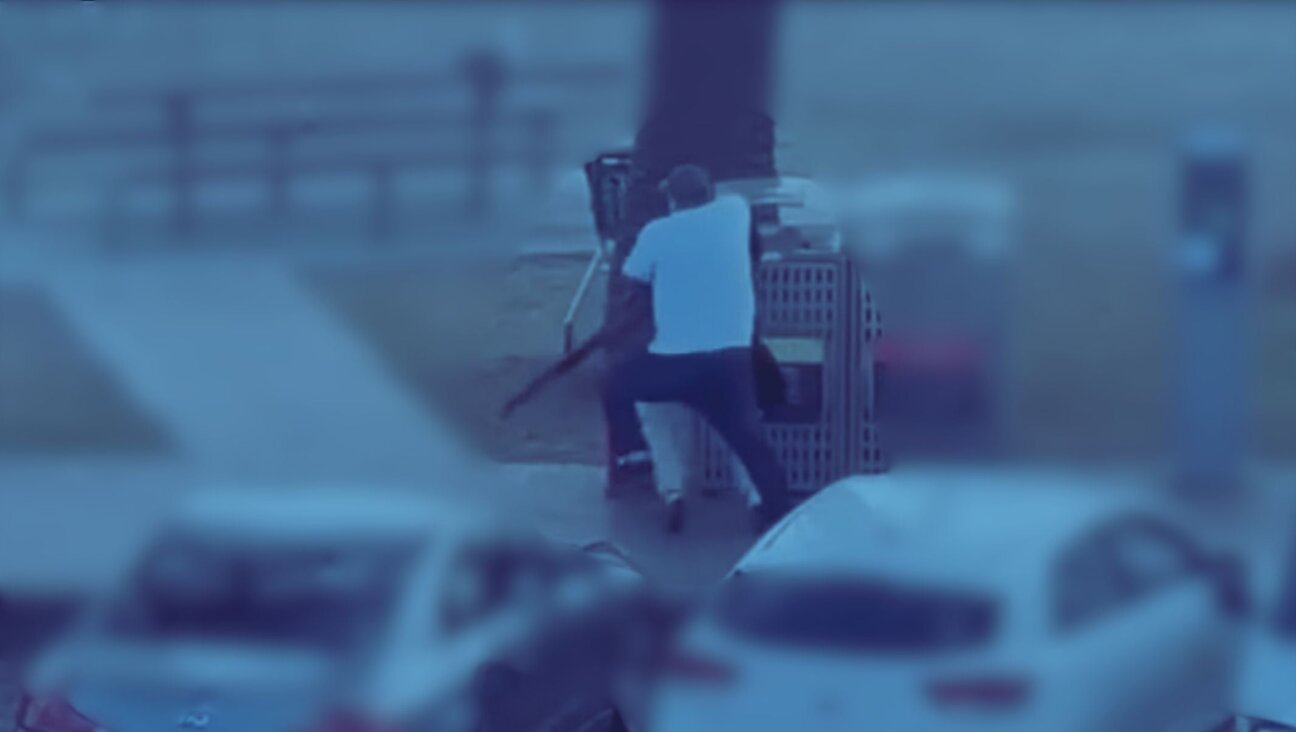‘No more violence:’ Jewish activists react to Trump’s last-minute execution spree

By Getty Images
On the first night of Hanukkah, Terry Fear was protesting outside the federal death chamber in Terre Haute, Ind., during the execution of Brandon Bernard. The flickering candles of her hanukkiah provided light for her vigil.
Last year, at the direction of President Trump, the Department of Justice (DOJ) killed 10 people, ending the federal government’s informal 17-year moratorium on executions. Fear protested outside of nearly every single one.
On the third day of Hanukkah, she unexpectedly passed away. As chronicled extensively by The United Hebrew Congregation of Terre Haute, Indiana, where Fear was a longtime member, her journey reads as a model of Jewish activism; in an obituary, Ken Turetzky wrote she “lived by the precepts of Tikkun Olam, pursuing a dedication to repair the world.”
Her widower, Steve Fear, said that her opposition to the death penalty was motivated by her Judaism and dedication to social justice. She came to each vigil with three things, he said: “Her prayer book, lawn chair, and sign.”
With just eight days remaining in his presidency, Trump has already presided over more federal executions than any president since Franklin Roosevelt. The most recent was that of Lisa Montgomery, in the early hours of Jan. 13. And in the coming days, two more are set to occur: those of Corey Johnson (Jan. 14) and Dustin Higgs (Jan. 15).
When it comes to the death penalty, less than a month before her death Fear wrote, “Justice is not blind, but it is capricious.” Montgomery, Johnson, and Higgs’ cases all serve as evidence of her apt assessment. Montgomery’s execution was an act of unnecessary cruelty, and Johnson and Higgs’ will be.
Montgomery was the only woman on federal death row, sentenced to death for the murder of a pregnant woman and the kidnapping of her child. Her crime was influenced by significant mental illness — Montgomery’s lawyers argued that at the time of the crime she was psychotic — as well as a long legacy of childhood trauma and abuse. In prison, she was sometimes forced to wear a “safety smock,” a garment designed to prevent suicide, and not allowed to write with anything other than a crayon.
In the days leading up to Montgomery’s scheduled execution, her attorneys won multiple stays from federal judges, citing a 2002 Supreme Court ruling that found the execution of mentally ill people unconstitutional. But stay by stay, the present-day Supreme Court, at the behest of the Trump administration, vacated these lower-court rulings.
While Montgomery’s execution has drawn the most public outrage, the prospect of Johnson and Higgs’ is equally troubling. In Terre Haute, where all three inmates are set to be executed, at least 14 of the 50 men on death row have tested positive for COVID-19, including both Johnson and Higgs. Medical experts fear that their planned executions by lethal injection will result in torturous sensations, likely akin to waterboarding, due to the possible lung damage they have suffered from COVID-19. On Jan. 12, a federal judge granted both men a stay based on that concern, which the Trump administration will almost certainly appeal.
Psychological evaluations of Johnson, who was held back in second grade for three years, suggest that, like Montgomery, he may well meet the Supreme Court’s criteria for being ineligible for execution on account of his mental illness. But when he faced trial in 1993 for killing seven people, his intellectual disability was not not a part of his defense. Courts have used this omission as an excuse to not re-evaluate Johnson and his sentence.
And Higgs is facing execution for a case that should never have carried a capital sentence. In 1996, he was present at the murders of Tamika Black, Tanji Jackson and Mishann Chinn. But despite all of the witnesses to the crime asserting that Higgs killed no one, he was convicted on three counts of murder and kidnapping. This was only possible because, one of his lawyers told Newsweek, “prosecutors actively misled the jury.” Additionally, the crime was committed in Maryland, which has since abolished the death penalty.
Former prison chaplain Michael Zoosman, a cantor and founder of a Jewish abolitionist group, said that Higgs’ case exemplifies the injustice and inconsistency of the death penalty in practice. The only reason Higgs is on death row, Zoosman said, is “because the crime took place on federal property.”
“If it had just been slightly down the street, in the state of Maryland, he would be alive.”
Trump’s rush to execute in the final days of his term is barbaric, not only because of the mitigating circumstances in each of the condemned’s cases, but also because President-elect Biden, an opponent of the death penalty, is just days away from having the power to commute their executions and halt the practice.
It is possible that Higgs will be the final casualty of the federal death penalty: Democrats in Washington have already introduced legislation to abolish its use.
When I asked Abe Bonowitz, director of Death Penalty Action, for his thoughts on whether all three inmates would in fact see their sentences carried out this week, he said “no one really knows… and that is part of the torture.” He was not particularly optimistic. While he expects that lower courts will continue to issue stays, he’s also sure that the DOJ will continue to push for executions, and that the Supreme Court will continue to rule in the government’s favor.
Citing onerous Talmudic rules that demand a unanimous decision of 23 rabbis, multiple witnesses and warnings, Bonowitz noted that if the courts operated using Jewish law, then none of this would be a problem.
When it comes to the death penalty, like most every controversial debate, it’s dishonest to claim the existence of a singular “Jewish” position on the issue. Unsurprisingly for a millennia-old text, the Torah lists dozens of capital crimes. And while an academic debate rages on as to what Mishnaic and Talmudic rabbis thought about the practice, in the contemporary Jewish world, there is a shockingly broad consensus.
Since the 1960s, both the Reform and Conservative movements have advocated for the abolition of the death penalty. And for more than two decades, the Orthodox Union has endorsed a moratorium on the practice.
After the federal government resumed executions in July, Zoosman began writing letters to inmates on death row, doing his best to offer comfort. It wasn’t until he began writing that he realized that Higgs’ crimes occurred at a park just a couple blocks away from where he lives.
At the beginning of this week, Zoosman went down the street and held a personal vigil at the scene where Tamika Black, Tanji Jackson and Mishann Chinn had been killed. He recited the El Malei Rachamim, the Jewish prayer for the dead, in remembrance of Black, Jackson and Chinn, and “asked that no more violence be done in their names.”
More than 600 miles away, in Terre Haute, Bonowitz and his organization are holding vigils, too. Steve Fear plans to join them.
Zachariah Sippy is an intern at the Forward. He can be reached at [email protected]

















